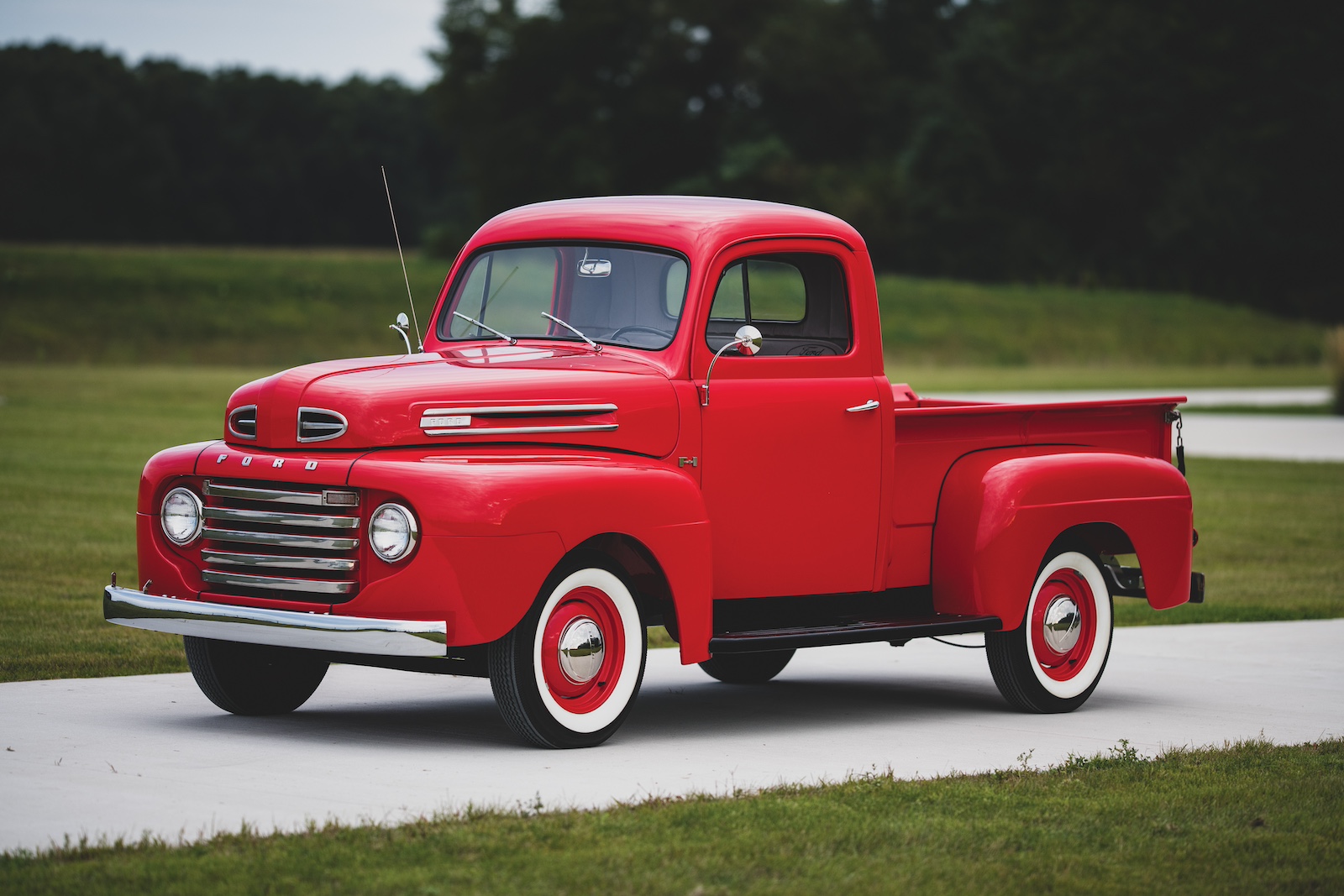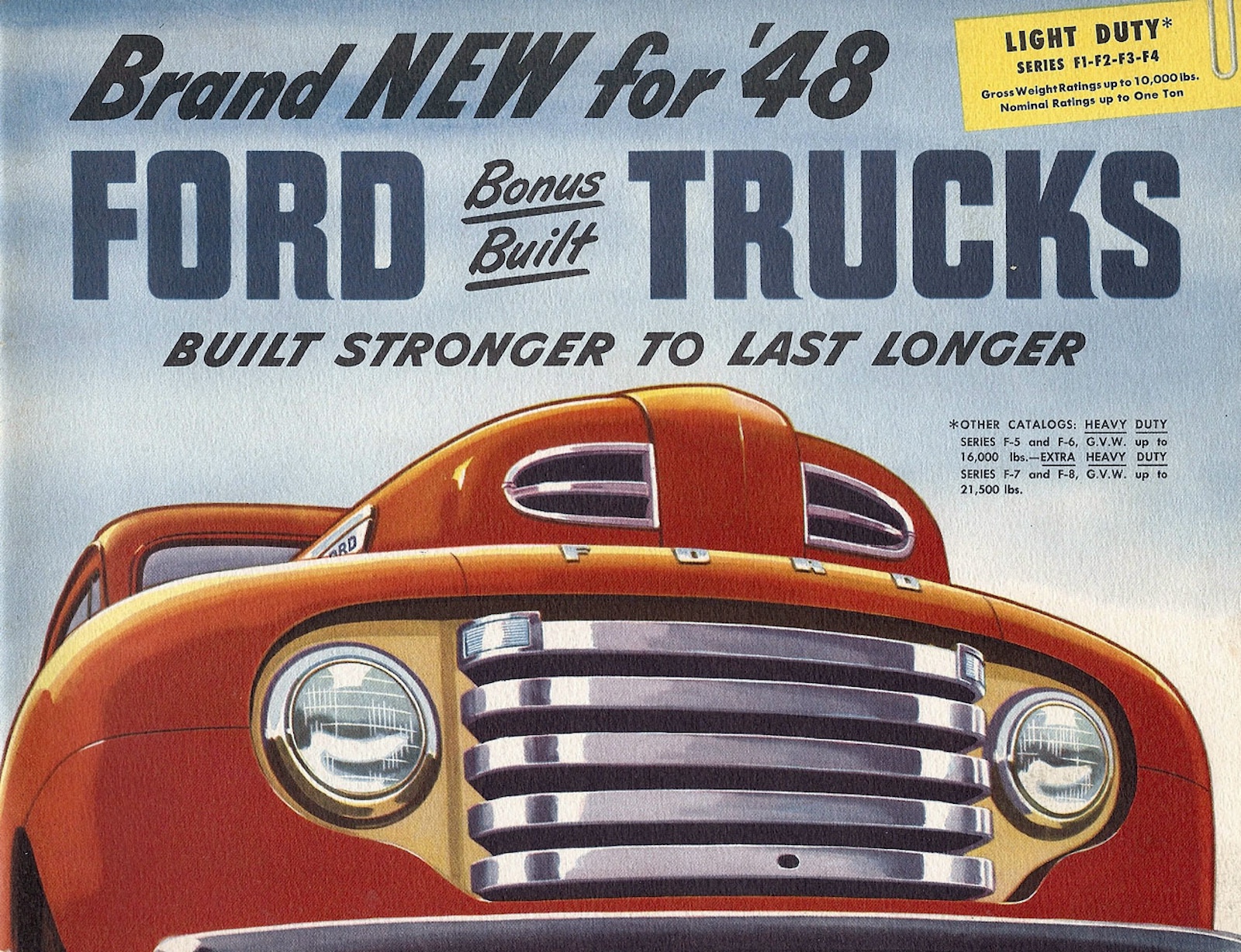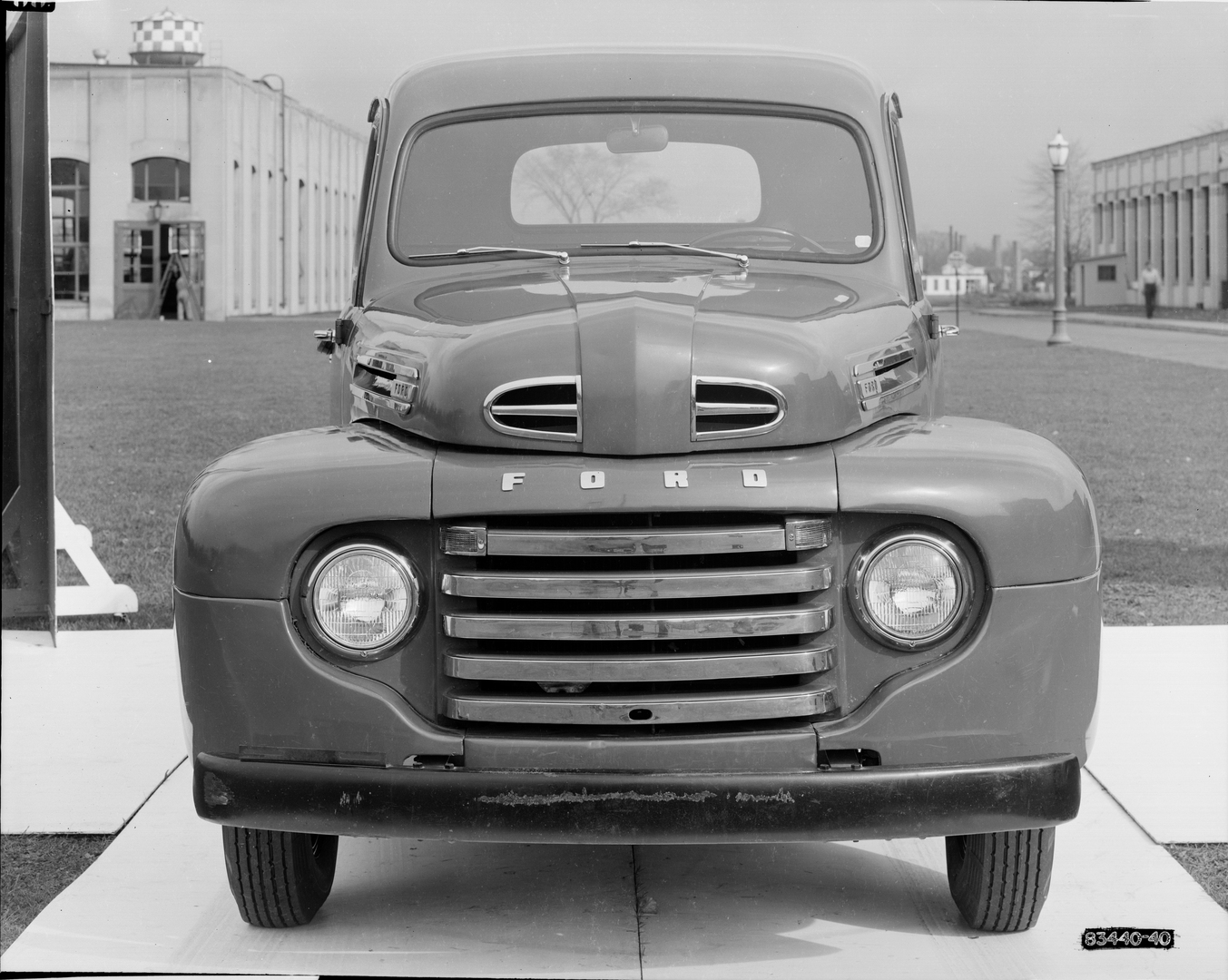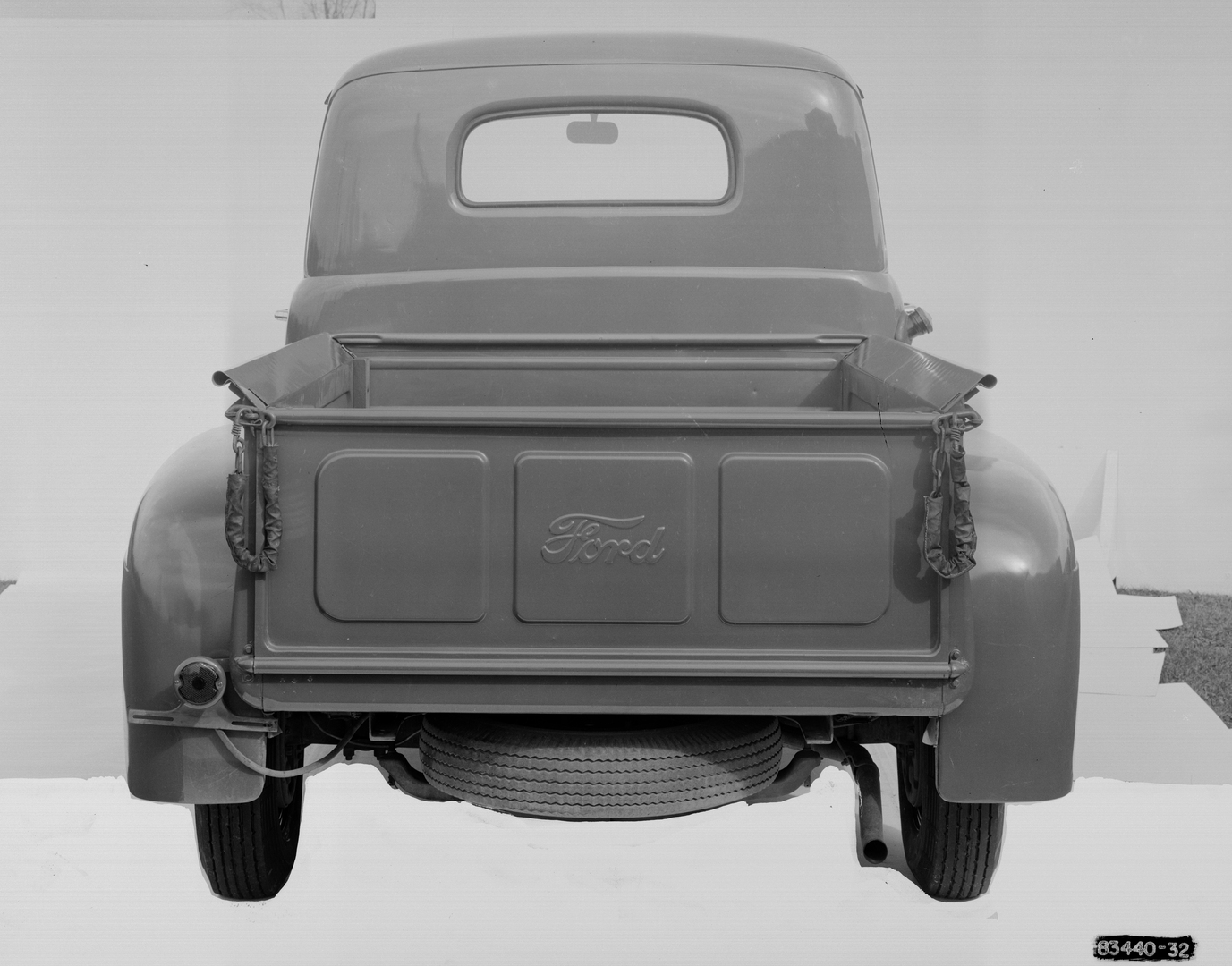Having spent 47 years as America’s bestselling truck and 42 years as its bestselling vehicle, it’s hard to imagine when the Ford F-Series wasn’t so predominant. After all, a new is sold every 49 seconds.
And this week in 1948, the first F-Series pickup truck was introduced, coming at a troubled time for the company.
A NEW FORD TAKES THE HELM
As Henry Ford II took the reins of the crumbling Ford Motor Co. empire from his increasingly senile grandfather, in 1945, it was fresh, contemporary products that were sure to revive the company’s fortunes.
Wisely, the first redesign products to come out of Dearborn were trucks, as they didn’t require as much development time.
But the new truck line differed from had come before. Ford had long produced pickup trucks, the first being the 1917 Model TT. But they were typically derived from the company’s car chassis. For the first time, trucks would have their own unique chassis developed specifically for Ford trucks.
It was cloaked in up-to-the-minute styling, with a cabin that was 7 inches wider than the previous model. And Ford moved the door hinges forward to make it easier to get into the truck. It was all steel at a time when their station wagons still used wood for their bodies, and featured a 6.5-foot bed or 8-foot bed.
A 3.7-liter L-head inline 6-cylinder engine, introduced in 1941, produced 95 horsepower and 180 pound-feet of torque through a 3-speed manual transmission. A 100-hp 3.9-liter V8 was optional and had identical torque to the six. But the V8’s came on at 2,000 rpm; the six at 1,200 rpm, making it far more useful.
AN IMPORTANT NEW FORD
Ford’s first all-new post-war vehicle, which debuted ahead of the 1949 Ford, Mercury, and Lincoln car lines, rivaled GM’s Advanced Design trucks. The F1 marked the beginning of an easily recognizable nameplate that has evolved into the F-series Ford uses today. It was also offered in Canada both as a Ford F1 and a Mercury M1.
Ford’s new postwar pickup line was introduced in January 1948, with the F1 half-ton, F2 ¾-ton trucks, F3 1-ton trucks, all the way up to the three-ton F8. It’s hardly a coincidence that Ford called them “Bonus Built.”
The company allegedly invested $1 million to create them. A primary objective was to make the vehicle more user-friendly for both drivers and passengers. The higher, broader “Million Dollar Cab” created a “living-room” atmosphere, and its upgraded seat provided “easy chair comfort”
From 1948 through 1950, the F-Series trucks were all but cookie cutter identical.
During the last few decades, the Ford F1 has been mostly forgotten by enthusiasts, with most preferring the 1953–56 “Effies” for Ford fans. Although it was almost as popular as the Advanced Design when it was new, it ranked second in terms of overall sales. Yet an increasing number have surfaced on the collector market sporting big buck restorations, so that appears to be changing.
After all, it’s the truck that started what has become the most important vehicle in Ford’s lineup. And it was unveiled this week, 76 years ago.






0 Comments